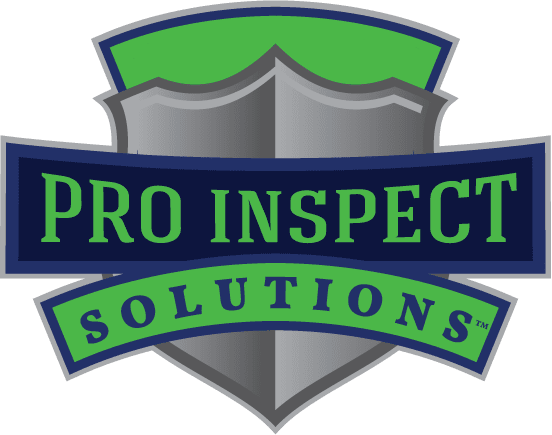
Home Inspection Red Flags: What to watch out for
When it comes to buying a new home, a thorough inspection is your best friend. A home inspection is a critical step in the homebuying process, as it can reveal hidden issues that might not be apparent to the untrained eye. While most homes will have some minor issues. These red flags should not be ignored, as they can lead to significant expenses and safety concerns if left unaddressed. If any of these issues are identified during a home inspection, it’s essential to consult with experts or professionals for a more in-depth assessment and recommendations for repairs or further inspections. This information will help you make an informed decision about whether to proceed with the purchase and negotiate with the seller if needed.
- Foundation Problems: Cracks in a home’s foundation can be early warning signs of potentially serious structural issues. Different types of cracks, such as horizontal, vertical, or stair-step cracks, may suggest different underlying problems. In addition to cracks, uneven floors, misaligned doors and windows, interior and exterior wall cracks, basement, and crawlspace issues, as well as signs of water intrusion or mold growth, can all be indicators of foundation problems. Large trees or poorly graded soil near the foundation can exacerbate these issues. It’s crucial to inquire about any previous foundation repairs and ensure they were professionally executed. If any of these red flags are identified during a home inspection, consulting with a structural engineer or foundation specialist is essential to assess the severity and receive expert recommendations for timely repair. Addressing foundation issues promptly is crucial to prevent them from escalating into more extensive and costly problems.
- Roofing Issues: the presence of missing or visibly damaged shingles, as well as curling, blistering, or buckling shingles, should be recognized as red flags for potential roofing problems. Water stains on ceilings or walls beneath the roof, coupled with signs of rot or water damage in the attic or upper floors, indicate possible ongoing roofing issues that require attention. Inadequate roof ventilation, which can result in moisture buildup and structural damage, must be considered if excessive attic heat or condensation is observed. Additionally, damaged or improperly installed flashing around roof penetrations, such as chimneys, vents, or skylights, may lead to leaks and should raise concerns. Lastly, a sagging roof should be noted as it may point to structural problems that warrant further investigation.
- Electrical Problems: Outdated or faulty electrical systems pose a serious safety hazard. Our team of home inspectors will check for outdated wiring, exposed wires, overloaded circuits, and malfunctioning outlets. If electrical issues are discovered, hire a licensed electrician to address them. Electrical problems should never be overlooked, as they can lead to fires and other safety hazards.
- Plumbing Concerns: Leaking pipes, clogged drains, and inadequate water pressure are common plumbing issues. Our team of home inspectors will inspect the plumbing system for any visible problems. Address plumbing issues promptly to prevent water damage and mold growth. A professional plumber can assess and fix any issues, ensuring a reliable and safe water supply.
- Mold and Mildew: Mold and mildew can be a sign of water intrusion or poor ventilation. Inspectors will look for visible signs of mold in areas prone to moisture, such as basements, bathrooms, and crawl spaces. Mold problems should be taken seriously, as they can affect indoor air quality and cause health issues. Consult a mold remediation specialist to assess and eliminate the source of the problem.
- HVAC System Problems: An inefficient or malfunctioning HVAC system can lead to discomfort and high energy bills. Inspectors will evaluate the heating and cooling systems, including their age and condition. Regular HVAC maintenance is essential to ensure your system operates efficiently. If there are significant issues, consider repair or replacement for improved comfort and energy efficiency.
- Structural Integrity: the discovery of cracks in the foundation, walls, or ceilings, which may signal underlying structural issues. Signs such as uneven floors, doors, and windows out of alignment, or sagging walls can all point to potential problems that could affect the home’s safety and stability. Addressing these issues promptly is imperative to ensure the long-term structural soundness of the property and avoid costly repairs or safety hazards in the future.
- Pest Infestations: A critical red flag for a home inspector is the presence of pests, including live or dead insects, rodents, or other unwanted creatures within the property. Notably, visual evidence such as insect wings, droppings, or gnaw marks can provide indications of specific pests lurking in the home. Pest-related issues extend beyond mere nuisances; they encompass potential wood damage, electrical hazards from rodent-chewed wiring, and even structural problems. Unusual odors or the discovery of pest nests and trails further emphasize the need for immediate attention. Moreover, excessive vegetation or woodpiles near the home can attract pests, making it crucial to ensure proper clearance and maintenance. Addressing pest infestations promptly is essential for both the safety and overall well-being of the property.



